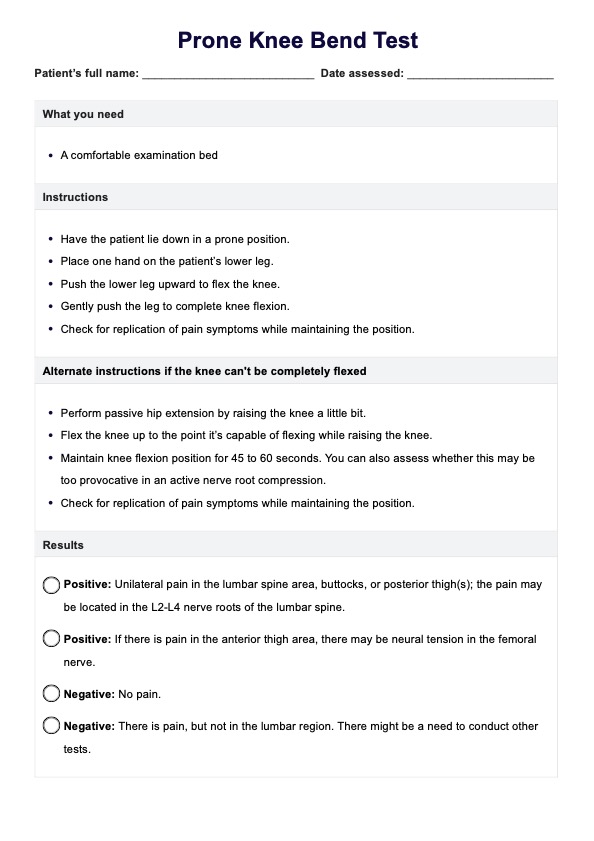Surgery for radicular pain is rare. The only time this becomes an option is if all other forms of treatment don't work and if the pain is severe, so it would be best to resort to more conservative methods first, like lumbar spinal extension exercises.

Prone Knee Bend Test
Learn about the Prone Knee Bend Test and how it assesses radicular pain.
Use Template
Prone Knee Bend Test Template
Commonly asked questions
Some people lose their radicular pain in a few days, and some take a few weeks. If radicular pain lasts for months, it is best to see a healthcare professional as soon as possible.
The most basic way to prevent radicular pain is to maintain good spine posture and avoid situations that can lead to accidents impacting your spinal cord.
EHR and practice management software
Get started for free
*No credit card required
Free
$0/usd
Unlimited clients
Telehealth
1GB of storage
Client portal text
Automated billing and online payments











